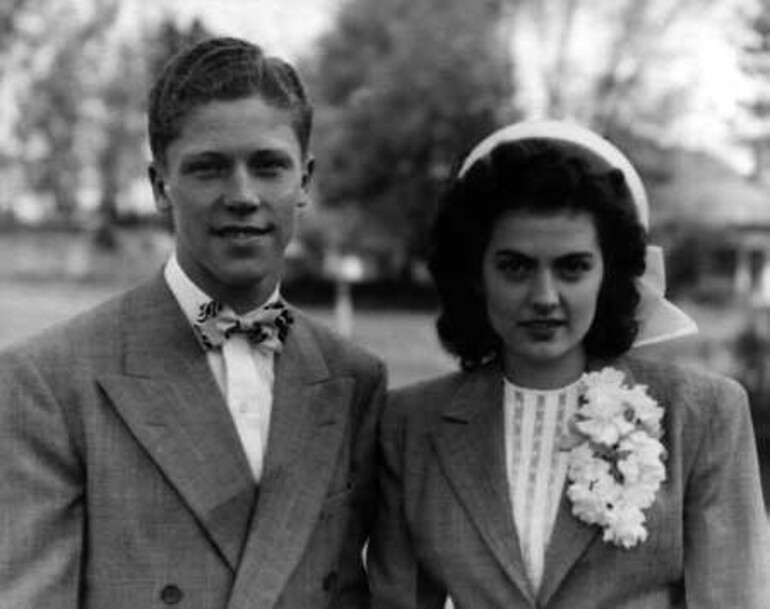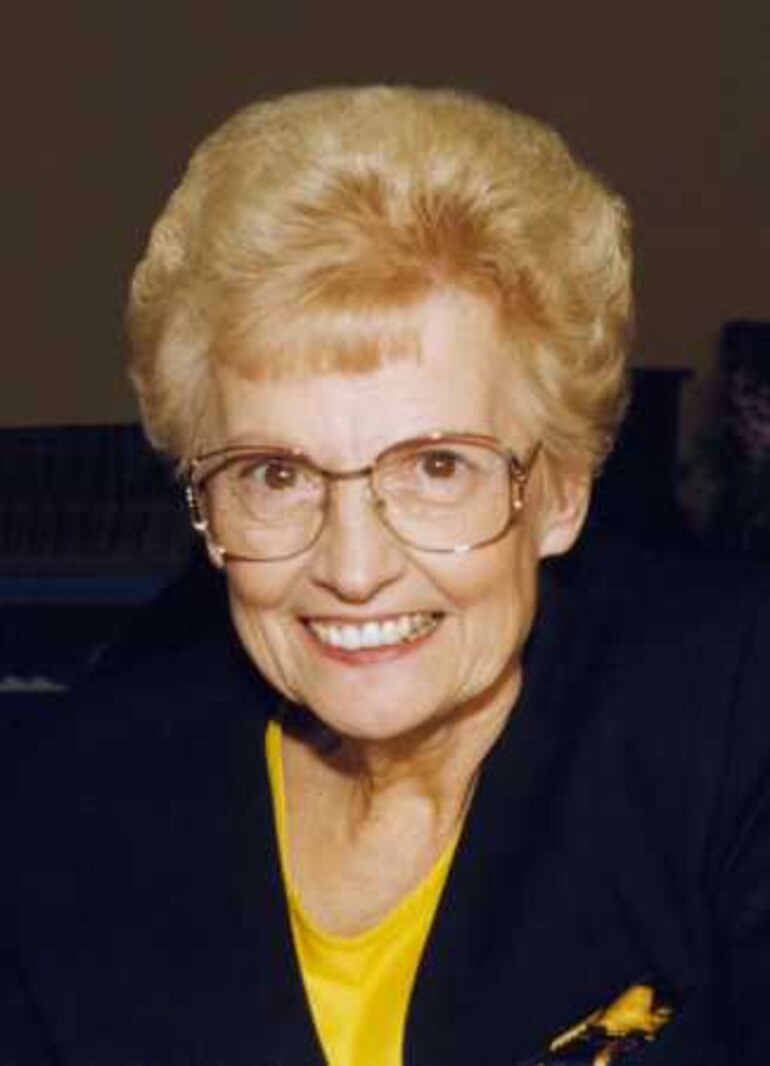My Teacher, My Sleuth Frances Dixon, a detective among the dyslexic, found excellence where hope was nearly gone. The war was over, but back in 1946, the battle was just beginning for 17-year-old schoolteacher Frances Bruce. Daughter of milk-deliveryman Claire Bruce and wife Ruth Gossett Bruce, Frances had always wanted to be a teacher. But now, a severe teacher-shortage had launched her straight from high school into a buzz saw of countrified students, some her own age, in White Salmon, Washington. “Back then, teachers began teaching right out of high school,” she told friends earlier this year, her memory as sharp and her wit as keen as 57 years before, when she held her own against elementary students a foot taller and twice her weight. It was a tough year, that stint back in 1946, and many was the night Frances seriously thought of doing something different in life. But her naturally soft, kittenish voice and the “you-can-do-it” encouragement in her long-lashed, brown eyes brought out the best, even among the boisterous and hard of learning. By the end of the year, she knew she was born to be a teacher—and so did her students and their parents. For the Love of Bill That summer, she married teacher/mountain climber James Dixon, and by 1955, they had three children of their own—Barbara, Bruce and Bill. Like their initials “B” suggested, they were good students, but didn’t always get straight A’s—especially the dreamy, athletic Bill. Bill learned quickly enough, but he had his own way of recording facts and figures. And Bill’s ways didn’t always impress his teachers. Unlike his older sister and brother, Bill found little joy in reading or writing and resisted having anything to do with either subject. Baffled, Frances recognized that her son’s mind operated on a different frequency, that teaching methods designed for the mainstream were simply not connecting with her younger son’s thought patterns. So she did what she had always done when faced with difficult students and stiff challenges—she hunkered down to study and sleuth. And she was able to ferret out ways of teaching Bill that dovetailed with his natural way of learning. Back then, the term “dyslexic” was seldom heard in educational circles, and when it was, it stood for a virtual academic death sentence. If a student wasn't “lexic”—that is, prone to read and write—what business did he or she have staying in school, suffering and causing suffering to themselves, their teachers and their classmates? But Frances knew Bill was a bright boy whose strengths shone in other areas, and she was determined that he would not go through life handicapped by poor reading and writing skills. In time, Bill went on to attend college (though he did not graduate), and now operates a thriving business in Oregon as a horse-shoer—a ferrier. Son Bruce is a medical technologist, and daughter Barbara followed in her mother's footsteps as a grade school teacher currently on staff at Hood View Junior Academy near Portland, Oregon. Compassionate Sleuthing Frances’ success with Bill, however, was more than a simple victory for the Dixon family. After completing her bachelor’s degree in education in 1971, Frances immediately set out to study for her master’s degree in special education. For by then, the word “dyslexia” was becoming a buzzword among educators, and Frances knew that her experience with Bill had placed her well ahead of the learning curve. One year before, 1970, Frances and Jim had began teaching at Hood View Jr. Academy, where they would remain until retirement—and beyond. Frances would eventually dedicate a total of 29 teaching years to the thriving, 200-plus student school. In 1980, after receiving her special education certificate, Frances began teaching special education classes full time at Hood View, often raising funds personally and with family members to subsidize its limited budget. Her special education classes at Hood View were some of the first offered in Adventist schools in the Northwest. But her example has led to proliferation of these classes in the Adventist school system. By the time Frances received the prestigious Zapara Award for Excellence in Teaching in 1988, many Adventist schools were seriously studying her experience at Hood View and opening programs of their own. “Special education was something really new back then,” she explained, “and administrators weren’t sure we could afford it. But in time, they recognized that we couldn’t afford not to offer special education. Soon, our program was directly responsible for attracting 10 percent or more of the Hood View student body. And the students and their families appreciated our program so much, they spread the word throughout the area. This year, I had some of the children of my early students in my classes—their moms and dads wanted them to have the same experience they had at Hood View with me.” Fallen, But Not Defeated Though she and Jim officially retired 15 years ago, Frances continued teaching special education classes at Hood View until April 16 this year. But all was not going well in her life. In late 1999, she had begun to lose strength in one of her legs—a creeping paralysis medical science seemed unable to diagnose. She visited various physicians, and each seemed to have a different theory about what was going on in her body. But the still-vivacious Frances knew that her condition was neither psychological nor the result of some mysterious injury that would soon heal. Her students had trouble reading—dyslexic. Now she was “dysambulatory”—nearly unable to walk. But through all the tests, months of uncertainty and nights of perplexity, Frances continued to carry the torch for her special ed students, rarely missing a class. When she had to use a motorized cart to get around at school, she kept right on teaching, never giving up on herself as she trained her detective eye on the individual needs of her 23 students. And when at last the diagnosis became known—atypical polymyositis, a condition similar to Lou Gehrig’s Disease—Frances kept right on teaching. Even as earlier this year her lungs began to falter as the muscles of her diaphragm lost their strength, with an apologetic smile and shorter and shorter breaths, she continued teaching. When she began to drift into a coma on April 22 and consciousness slowly ebbed, family members and caregivers gathered around her bed to pray and sing and bid their last, loving farewells. As her eyes closed and she drifted from consciousness, they heard her paper-thin voice speaking once again to her students, as her imagination carried her back, once again, to her special education classroom. They saw her arm raised once again in the air, tracing the letters with her imaginary students, urging them to keep trying, that they could learn, that they could succeed, that they could overcome. These were among her very last words. Frances Dixon had finished her course. But her school and the many hundreds of alumni she touched during her life have by no means given up the faith. Frances, that indomitable sleuth who taught scores of dyslexic students to believe in their ability to succeed, was a pioneer of something in Northwestern Adventist schools that will not be going away anytime soon.* Through her tact, kindness and stubborn perseverance, she has found excellence in students who others believed could never learn. And in doing so, she has brought even greater excellence to Adventist education in the Northwest. *A Frances Dixon Special Education Trust Fund has been established in care of the Oregon Conference of Seventh-day Adventists. Edwin A. Schwisow writes from Sandy, Oregon, where he serves as a public relations consultant and author.
My Teacher, My Sleuth
Frances Dixon, a detective among the dyslexic, found excellence where hope was nearly gone.
The war was over, but back in 1946, the battle was just beginning for 17-year-old schoolteacher Frances Bruce.
Daughter of milk-deliveryman Claire Bruce and wife Ruth Gossett Bruce, Frances had always wanted to be a teacher. But now, a severe teacher-shortage had launched her straight from high school into a buzz saw of countrified students, some her own age, in White Salmon, Washington.
“Back then, teachers began teaching right out of high school,” she told friends earlier this year, her memory as sharp and her wit as keen as 57 years before, when she held her own against elementary students a foot taller and twice her weight. It was a tough year, that stint back in 1946, and many was the night Frances seriously thought of doing something different in life.
But her naturally soft, kittenish voice and the “you-can-do-it” encouragement in her long-lashed, brown eyes brought out the best, even among the boisterous and hard of learning. By the end of the year, she knew she was born to be a teacher—and so did her students and their parents.
For the Love of Bill
That summer, she married teacher/mountain climber James Dixon, and by 1955, they had three children of their own—Barbara, Bruce and Bill. Like their initials “B” suggested, they were good students, but didn’t always get straight A’s—especially the dreamy, athletic Bill.
Bill learned quickly enough, but he had his own way of recording facts and figures. And Bill’s ways didn’t always impress his teachers.
Unlike his older sister and brother, Bill found little joy in reading or writing and resisted having anything to do with either subject. Baffled, Frances recognized that her son’s mind operated on a different frequency, that teaching methods designed for the mainstream were simply not connecting with her younger son’s thought patterns.
So she did what she had always done when faced with difficult students and stiff challenges—she hunkered down to study and sleuth. And she was able to ferret out ways of teaching Bill that dovetailed with his natural way of learning.
Back then, the term “dyslexic” was seldom heard in educational circles, and when it was, it stood for a virtual academic death sentence. If a student wasn't “lexic”—that is, prone to read and write—what business did he or she have staying in school, suffering and causing suffering to themselves, their teachers and their classmates?
But Frances knew Bill was a bright boy whose strengths shone in other areas, and she was determined that he would not go through life handicapped by poor reading and writing skills. In time, Bill went on to attend college (though he did not graduate), and now operates a thriving business in Oregon as a horse-shoer—a ferrier.
Son Bruce is a medical technologist, and daughter Barbara followed in her mother's footsteps as a grade school teacher currently on staff at Hood View Junior Academy near Portland, Oregon.
Compassionate Sleuthing
Frances’ success with Bill, however, was more than a simple victory for the Dixon family. After completing her bachelor’s degree in education in 1971, Frances immediately set out to study for her master’s degree in special education. For by then, the word “dyslexia” was becoming a buzzword among educators, and Frances knew that her experience with Bill had placed her well ahead of the learning curve.
One year before, 1970, Frances and Jim had began teaching at Hood View Jr. Academy, where they would remain until retirement—and beyond. Frances would eventually dedicate a total of 29 teaching years to the thriving, 200-plus student school.
In 1980, after receiving her special education certificate, Frances began teaching special education classes full time at Hood View, often raising funds personally and with family members to subsidize its limited budget. Her special education classes at Hood View were some of the first offered in Adventist schools in the Northwest. But her example has led to proliferation of these classes in the Adventist school system.
By the time Frances received the prestigious Zapara Award for Excellence in Teaching in 1988, many Adventist schools were seriously studying her experience at Hood View and opening programs of their own.
“Special education was something really new back then,” she explained, “and administrators weren’t sure we could afford it. But in time, they recognized that we couldn’t afford not to offer special education. Soon, our program was directly responsible for attracting 10 percent or more of the Hood View student body. And the students and their families appreciated our program so much, they spread the word throughout the area. This year, I had some of the children of my early students in my classes—their moms and dads wanted them to have the same experience they had at Hood View with me.”
Fallen, But Not Defeated
Though she and Jim officially retired 15 years ago, Frances continued teaching special education classes at Hood View until April 16 this year.
But all was not going well in her life. In late 1999, she had begun to lose strength in one of her legs—a creeping paralysis medical science seemed unable to diagnose. She visited various physicians, and each seemed to have a different theory about what was going on in her body.
But the still-vivacious Frances knew that her condition was neither psychological nor the result of some mysterious injury that would soon heal. Her students had trouble reading—dyslexic. Now she was “dysambulatory”—nearly unable to walk.
But through all the tests, months of uncertainty and nights of perplexity, Frances continued to carry the torch for her special ed students, rarely missing a class.
When she had to use a motorized cart to get around at school, she kept right on teaching, never giving up on herself as she trained her detective eye on the individual needs of her 23 students.
And when at last the diagnosis became known—atypical polymyositis, a condition similar to Lou Gehrig’s Disease—Frances kept right on teaching.
Even as earlier this year her lungs began to falter as the muscles of her diaphragm lost their strength, with an apologetic smile and shorter and shorter breaths, she continued teaching.
When she began to drift into a coma on April 22 and consciousness slowly ebbed, family members and caregivers gathered around her bed to pray and sing and bid their last, loving farewells.
As her eyes closed and she drifted from consciousness, they heard her paper-thin voice speaking once again to her students, as her imagination carried her back, once again, to her special education classroom.
They saw her arm raised once again in the air, tracing the letters with her imaginary students, urging them to keep trying, that they could learn, that they could succeed, that they could overcome.
These were among her very last words. Frances Dixon had finished her course.
But her school and the many hundreds of alumni she touched during her life have by no means given up the faith. Frances, that indomitable sleuth who taught scores of dyslexic students to believe in their ability to succeed, was a pioneer of something in Northwestern Adventist schools that will not be going away anytime soon.*
Through her tact, kindness and stubborn perseverance, she has found excellence in students who others believed could never learn. And in doing so, she has brought even greater excellence to Adventist education in the Northwest.
*A Frances Dixon Special Education Trust Fund has been established in care of the Oregon Conference of Seventh-day Adventists.
Edwin A. Schwisow writes from Sandy, Oregon, where he serves as a public relations consultant and author.











